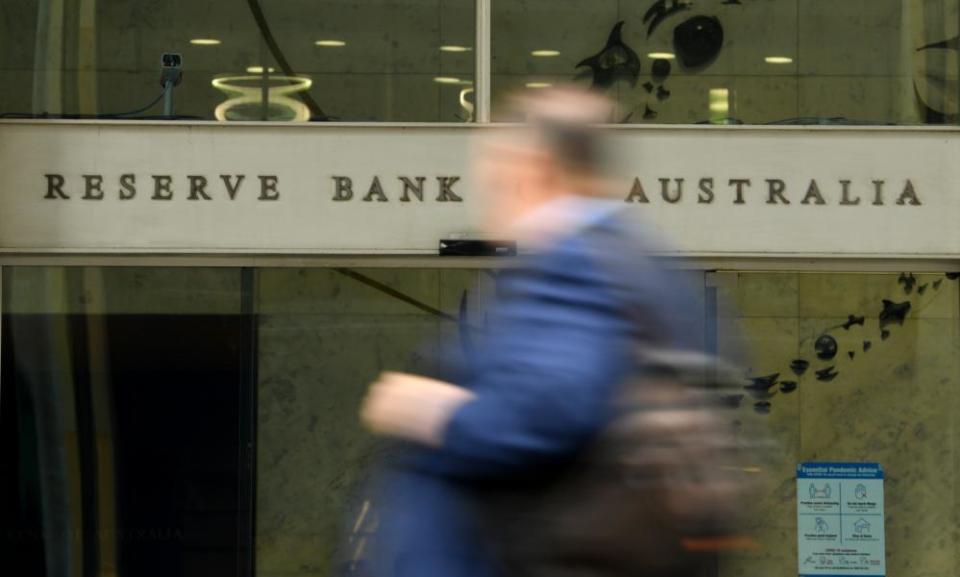Australia is unlikely to ever go back to pre-GFC interest rates. We can’t afford to

The last time the Reserve Bank increased interest rates was November 2010, and the budget estimates it won’t happen again for at least four more years. But importantly, given the increased size of mortgages, we are unlikely to ever again see interest rates as high as they were before the GFC.
Despite some increase from the near zero levels of last year, there are pretty much no signs of inflation being an issue in Australia:
Graph not displaying properly? Click here
This is quite stunning really because it means the long run of time since the last rate rise looks set to continue.
From December 1990 to the end of 2010, the Reserve Bank cut rates 28 times and increased them 27 times. Since the end of 2010, the Reserve Bank as cut the cash rate 18 times, and has never increased it.
This causes a bit of trepidation among some. They worry that given the size of current home loans, people would be absolutely smashed if rates rose back to previous levels.
This is true, except for two things: there is no sign of interest rates rising anytime soon, and there is no chance that the Reserve Bank would ever raise rates back to what they once were.
One of the biggest economic takeaways from the budget is that the government expects the Reserve Bank to keep the cash rate at the emergency level of 0.1% well into 2025.
We know this because in March the governor of the Reserve Bank stated that rates would not rise until inflation is “sustainably within the 2 to 3 per cent range”. And for that to occur he suggested that “it is likely that wages growth will need to be sustainably above 3 per cent”.
And so when the budget papers predict wages growth only rising to 2.75% by June 2025, that in effect means that the government expects the cash rate will remain at 0.1% till at least then.
This essentially goes along with the Reserve Bank’s own estimates in its latest statement on monetary policy which predicted that if everything went incredibly well and by June 2023 unemployment was down to a 50 year low of 3.5%, inflation would still be just 2.25%:
Graph not displaying properly? Click here
It’s fair to say a few things have changed since the RBA last increased rate. The average mortgage for a new or established home was around $362,000; now it is around $540,000.
Back then that mortgage was equivalent to 4.3 times the annual average household income; now it is close to five times the size.
And yet because interest rates are so low the cost of mortgage repayments are much less onerous now.
At the end of 2010 mortgage payments were worth around 35% of average household income, now they cost a touch over 22%:
Graph not displaying properly? Click here
The most expensive time to be paying off a mortgage was in 2008 when the average mortgage rate hit 8.62% and the cost of servicing an average new mortgage hit 37.5% of household income.
But do not fear. We will never get back to that interest rate again.
If mortgage rates were now 8.62%, the cost of servicing a mortgage would be just over 45% of an average household income:
Graph not displaying properly? Click here
That would utterly destroy the economy.
In effect the size of mortgage precludes rates ever getting that high again.
In fact, to get the cost of mortgage payments back to the 2008 level of 37.5% of household income, the rate would now only need to rise to 6.6%
Graph not displaying properly? Click here
But even that would be an increase of some 440 basis points from the current 2.2% rate – larger than the 300 basis points increase that occurred during the mining boom when the cash rate went from 4.25% to 7.25% in six years.
And what happened during that time? Wages growth was never below 3%, and for three years straight it was above 4%:
Graph not displaying properly? Click here
Wages haven’t grown above 4% for 12 years.
For average mortgage rates to get even close to 6% we would need to experience the most incredible economic boom any of us would have experienced.
Yes, rates will one day go up again – but because of our much larger mortgages now than 10 to 15 years ago each rate rise will have a bigger impact than in the past.
And given wages would need to grow above 3% for rates to rise, we can really only hope that they might go up sooner than the government expects.

 Yahoo Finance
Yahoo Finance 